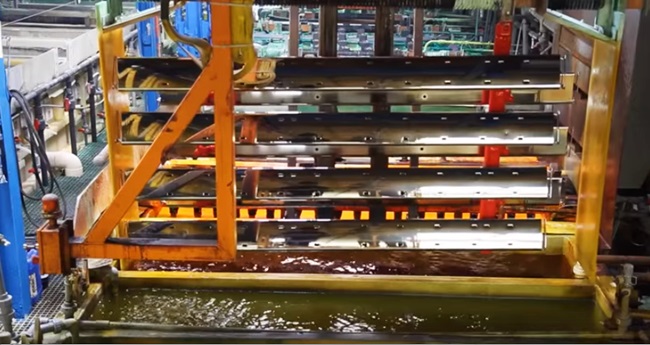Automotive Chrome Plating
Automotive Chrome Plating Industry: The automotive chrome plating industry specializes in applying a thin layer of chromium onto various automotive components, such as bumpers, trim, wheels, and grilles. Chrome plating enhances the aesthetic appeal of these parts, providing a shiny and reflective surface finish while also offering corrosion resistance. The industry typically involves surface preparation, electroplating processes, and post-plating treatments to achieve the desired chrome finish. Automotive manufacturers and custom car enthusiasts often utilize chrome plating to enhance the appearance and durability of their vehicles.
Chrome Plating Productions: Chrome plating productions refer to manufacturing processes specifically focused on chrome plating applications. These productions involve preparing the surface of the object to be plated, typically through cleaning and polishing. The object is then submerged in an electrolytic bath containing chromium ions, and an electric current is applied to facilitate the deposition of chromium onto the surface. The chrome-plated object is subsequently treated to achieve the desired appearance and protect against corrosion. Chrome plating productions serve a wide range of industries, including automotive, aerospace, decorative hardware, and industrial equipment.

Benefits of Chrome Plating:
Chrome plating in the automotive industry offers several benefits. Here are some advantages of chrome plating:
Enhanced Aesthetic Appeal
Chrome plating provides a lustrous and reflective surface finish that enhances the overall aesthetic appeal of automotive components. The bright and mirror-like appearance of chrome gives vehicles a sleek and premium look, adding to their visual appeal and perceived value.
Easy Maintenance
Chrome-plated surfaces are relatively easy to clean and maintain. The smooth and non-porous nature of chrome makes it resistant to staining, dirt, and debris buildup. Regular cleaning with mild soap and water is usually sufficient to keep chrome-plated automotive components looking polished and vibrant.
Heat Resistance
Chrome plating offers good heat resistance properties. It can withstand high temperatures without degrading or discoloring, making it suitable for components that may be exposed to elevated temperatures, such as exhaust tips or engine parts. Chrome plating helps to protect these components from heat-induced damage and maintain their appearance under extreme conditions.
Surface Hardness
Chrome plating increases the surface hardness of automotive components, providing resistance against scratches, abrasion, and minor impacts. This helps to maintain the appearance of the components and protect them from damage during everyday use or minor accidents.
Branding and Differentiation
Chrome-plated components have long been associated with luxury and high-end automobiles. By incorporating chrome-plated features, automakers can enhance their brand image, differentiate their vehicles, and create a distinct visual identity in the market.
Corrosion Resistance
Chrome is highly resistant to corrosion, making it an excellent protective coating for automotive components. Chrome plating acts as a barrier, preventing moisture, chemicals, and environmental factors from reaching the underlying material. This helps to protect the components from rust, corrosion, and degradation, leading to increased durability and longevity.
Wear Resistance
Chrome plating provides a hard and durable surface that exhibits excellent wear resistance. This is particularly beneficial for automotive components that are subjected to friction, abrasion, or mechanical stress, such as bumpers, trim, and wheels. Chrome plating helps to minimize surface wear, scratches, and damage, maintaining the appearance and functionality of the components over time.
Easy to Apply
Chrome plating can be applied to various automotive components using electroplating techniques. The process involves immersing the component in a bath containing chromium ions and applying an electric current to deposit the chrome layer. This makes it a versatile and efficient coating method for a wide range of automotive parts.
Versatility
Chrome plating can be applied to different types of automotive materials, including steel, aluminum, brass, and plastic. This versatility allows for the chrome plating process to be used on a variety of automotive components, enabling consistency in design and a unified look across the vehicle.

